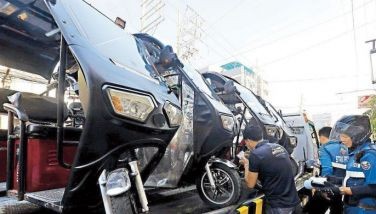3 to 5 military camps eyed for US troops
MANILA, Philippines - About three to five military camps are being considered as possible sites of American facilities to be built under the Enhanced Defense Cooperation Agreement (EDCA), a defense official said yesterday.
Defense Undersecretary Pio Lorenzo Batino said negotiators have started talks on the annexes of the pact, including the areas where US troops will construct their facilities and pre-position their equipment.
“These AFP (Armed Forces of the Philippines) bases will be the locations for pre-positioning activities and construction activities. It will not be the whole universe of the AFP bases,†Batino told a press briefing in Camp Aguinaldo.
“Right now the discussions would be ranging from three to five AFP bases. That’s not the final but that is the starting discussion point,†he added.
Batino, chairman of the Philippine negotiating panel on the EDCA, confirmed that among the sites being considered is Fort Magsaysay in Nueva Ecija, the largest military camp in the country.
“Fort Magsaysay is an ideal location. We usually hold Balikatan exercises there. But this is still being studied,†he said, referring to the annual bilateral drills between Filipino and American forces.
Earlier, the Armed Forces Northern Luzon Command said it is ready to make available Fort Magsaysay for US structures and equipment once a base access deal is forged.
The 44,000-hectare camp hosts the Army’s Special Operations Command and the 7th Infantry Division.
Batino declined to identify the other military installations being eyed for the agreement.
According to a recent Wall Street Journal article, the five sites that the US military is likely to aim for are Subic Bay and Cubi Point in Central Luzon, Clark in Pampanga; Oyster Bay in Palawan; Brooke’s Point in Palawan, and Batanes islands.
Officials, however, could not say whether the information provided by the article is accurate.
Subic and Clark served as locations of US bases before they were shut down in 1992.
Oyster Bay, meanwhile, hosts a naval base that will soon undergo multimillion-peso upgrades and improvements.
Both Oyster Bay and Brooke’s Point are located in Palawan, the province closest to the disputed Spratlys group of islands.
Batanes, meanwhile, was described by the Wall Street Journal article as a site that offers “an excellent vantage point from which to monitor a key maritime chokepoint for any vessels departing China for the Pacific Ocean.â€
Batino said the Armed Forces requested the Subic Bay Metropolitan Authority to allow limited portions of Subic.
“The Subic project, I must emphasize contrary to report, is an AFP project. The AFP is requesting for limited portions of Subic so that it can strategically locate Philippine Air Force and Philippine Navy equipment,†he explained.
EDCA, an offshoot of the Mutual Defense Treaty and the Visiting Forces Agreement, allows the US to construct facilities and store defense equipment in Philippine bases.
The activities allowed under the 10-year pact will take place in mutually agreed upon areas.
Officials claim EDCA would help modernize the AFP, widely regarded as the weakest in the region.
Officials could not, however, provide a timetable for the completion of the deal’s implementing agreements but maintained that the task remains a priority.
“There is no need to rush things,†said Eduardo Malaya, a member of the Philippine panel.
Batino said the number of US troops to be deployed to the Philippines would depend on the activities to be undertaken by the two countries.
Vice President Jejomar Binay said the new defense cooperation agreement with the US would not only deter aggressors but also provide a quick response mechanism to disasters.
Binay said EDCA is an important pillar of the country’s regional security policy.
“A stronger American military presence in the Philippines and greater interoperability between our respective armed forces dramatically increase our individual and collective defense capabilities, providing a dramatic deterrent against external aggression,†Binay said before the Banyan Tree Leadership Forum at the Center for Strategic and International Studies in Washington.
Through the EDCA, the Philippines has effectively upgraded its own security platform, without shifting a significant portion of its limited resources to support an arms race and procure weapons systems that exceed normal defense requirements.
“It will soothe and calm the investment climate in the Philippines. It enables us to focus better on developing a solid economic base to combat poverty, unemployment, illiteracy and disease,†he said.
Binay also pointed out EDCA does not signal a shift in the Manila’s core strategy for regional security.
Some lawmakers like Sen. Miriam Defensor-Santiago, however, believe EDCA is a treaty that must be sent to the Senate for ratification.
Senate President Franklin Drilon said the best way to settle the legal question regarding EDCA is to bring it to the Supreme Court. – With Jose Rodel Clapano, Pia Lee-Brago, Rhodina Villanueva
- Latest
- Trending


























